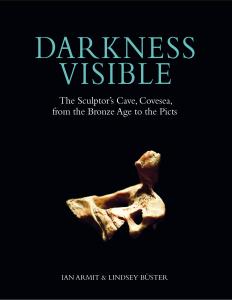Get e-book alerts
Sign up here to receive email alerts when new e-books are published.
The Sculptor’s Cave is one of the most enigmatic prehistoric sites in Britain. Excavated in the 1920s and 1970s, new analysis of the archive has revealed a complex history of funerary and ritual activity from the Late Bronze Age to the Roman Iron Age. Using innovative methods and new techniques, this volume re-examines the results of earlier excavations and places the site in its wider British and European context.
***
Winner of the Saltire Society Scottish Research Book of the Year 2021
***
Armit and Büster’s handsomely produced volume transports us back in time to both the late Bronze Age and Roman Iron Age, revealing exciting new evidence for the treatment of the dead in both periods.
– Professor Gordon Noble (Current Archaeology, 2021 'Darkness Visible: the Sculptor’s Cave, Covesea, from the Bronze Age to the Picts')
***
Darkness Visible is a valuable guide to a remarkable cave.
– Professor Benjamin Hudson (Scotia: Interdisciplinary Journal of Scottish Studies XLIV: 2022)
***
Professor Ian Armit is Chair in Archaeology at the University of York. His research centres on the social archaeology of Iron Age Europe and the nature of conflict and violence in prehistory.
Dr Lindsey Büster is a Research Associate at the University of York. Her research concerns ritual in later prehistoric Britain and Europe, with particular focus on the archaeology of death and burial.


This work is licensed under a Creative Commons Attribution-NonCommercial 4.0 International License.
Get e-book alerts
Sign up here to receive email alerts when new e-books are published.
Join The Society
The Fellows of the Society of Antiquaries of Scotland are a diverse group of people with one common passion – Scotland’s past.
Our publications
Published by the Society of Antiquaries of Scotland, registered charity no. SC 010440, National Museums Scotland, Chambers Street, Edinburgh EH1 1JF, United Kingdom
TERMS AND CONDITIONS | PRIVACY POLICY | PUBLICATION POLICIES
